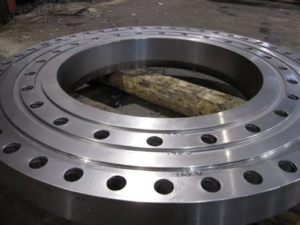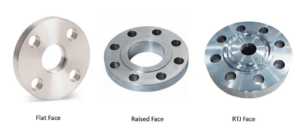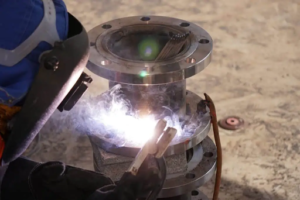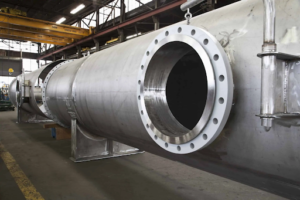In the realm of industrial engineering, body flanges are important components that ensure the operation of various systems. In this comprehensive guide, we’ll delve into the world of body flanges, exploring their specifications, materials, manufacturing processes, and extensive applications.
Image source:Texas Flange
Defining Body Flanges
Body flanges play an important role in industries such as oil and gas, petrochemicals, power generation, and more. Their primary function is to connect different parts of a piping system, facilitating the flow of fluids and gases in the shells of tanks, pressure vessels, and heat exchangers.
Let’s take a closer look at their characteristics:
Specifications and Standards
Body flanges come in a wide range of specifications and adhere to various industry standards to meet diverse project requirements:
Image source:Texas Flange
Dimensions: These flanges are manufactured in accordance with dimension standards such as ANSI, ASME, BS, DIN, and EN, ensuring compatibility with different equipment and systems.
Standards: Body flanges are produced according to industry standards like ANSI B16.5, ANSI B16.47 Series A & B, MSS SP44, ASA, API-605, AWWA, and even custom drawings. They are classified into different pressure classes, including 150 LBS, 300 LBS, 600 LBS, 900 LBS, 1500 LBS, and 2500 LBS, as well as DIN standards ND-6, 10, 16, 25, and 40.
Size and Flange Face Type: Body flanges come in various sizes, ranging from 1″ NB to 144″ NB, and different flange face types, including Flat Face (FF), Raised Face (RF), and Ring Type Joint (RTJ).
Materials and Grades
The choice of material for body flanges depends on the specific application and the environment in which they will operate.
Image source:Texas Flange
Various materials and grades are available:
Stainless Steel Body Flanges: Known for their corrosion resistance and durability, stainless steel body flanges are made from materials such as A-182 – F-304, Dual Grade 304/304L, Dual Grade 316/316L, 316, 304H, Dual Grade 304/304H, Dual Grade 316/316H, 316H, 309, 310, 317L, 321, 347, 347H, 904L, and others.
Duplex Steel Body Flanges: Designed for demanding environments, these flanges are made from materials like F51/2205, F53/2507
Alloy Steel Body Flanges: Alloy steel body flanges, such as those made from A -182, offer exceptional strength and resilience. Common grades include F1, F5, F9, F11, F12, F22, and F91.
Carbon Steel Body Flanges: Known for their robustness, carbon steel body flanges are manufactured from ASTM/ASME SA-105, A-350 LF-2, LF-3, A694, SA-516-70, A36, and other materials.
Nickel Alloy Body Flanges: These flanges are constructed using materials like Nickel 200, Nickel 201, Monel 400, Monel 500, Inconel 800, Inconel 825, and more, making them suitable for high-temperature and corrosive environments.
Copper Alloy Steel Body Flanges: Copper alloys, including 90/10 (C70600), 70/30 (C71500), offer excellent corrosion resistance and are used in various applications.
Applications Across Industries
The versatility of body flanges extends to their applications, which encompass a wide array of industries:
Image source:Texas Flange
Pharmaceutical Equipment: Body flanges ensure precise fluid control in pharmaceutical equipment.
Chemical Equipment: In chemical processing, these flanges ensure the safe and efficient transport of chemicals.
Sea Water Equipment: Their corrosion-resistant properties make body flanges useful in joining the shells of fabrications in sea water equipment.
Heat Exchangers and Condensers: These components are commonly used in heat exchangers and condensers, where temperature control is critical.
Pulp and Paper Industry: Body flanges play a role in the paper manufacturing process by allowing large tanks and pressure vessels to be constructed in smaller parts and joined together with bolts, nuts, and gaskets.
Off-Shore Oil Drilling Companies: The reliability of body flanges is critical in off-shore oil drilling applications.
Power Generation: In power plants, body flanges are instrumental in steam and water distribution systems.
Petrochemicals and Gas Processing: Body flanges are prevalent in the petrochemical and gas processing industries.
Specialty Chemicals and Pharmaceuticals: Their use extends to industries that require precision in chemical handling.
Frequently Asked Questions (FAQs)
- What is a body flange’s primary function?
A body flange’s main function is to connect different parts of a piping system, usually connecting the shells of tanks, pressure vessels, and heat exchangers..
- What are the common dimension standards for body flanges?
Body flanges adhere to various dimension standards, including ANSI, ASME, BS, DIN, and EN. Most often they are custom designed to match a shell and are supplied without a hub.
- Are there different pressure classes for body flanges?
Yes, body flanges come in various pressure classes, including 150 LBS, 300 LBS, 600 LBS, 900 LBS, 1500 LBS, and 2500 LBS, to accommodate different pressure requirements.
- What materials are commonly used for body flanges?
Common materials for body flanges include stainless steel, duplex steel, alloy steel, carbon steel, nickel alloys, and copper alloys. Basically any material that a shell or pipe can come in could use body flanges.
- In which industries are body flanges extensively used?
Body flanges find applications in industries such as pharmaceuticals, chemicals, sea water equipment, heat exchangers, power generation, and many others.
- What are the key differences between raised face (RF), flat face (FF), and ring type joint (RTJ) flanges, and when should I use each type?
Raised Face (RF): RF flanges have a raised surface for better gasket sealing. Use them in standard applications.
Flat Face (FF): FF flanges have a flat surface and are suitable for low-pressure or non-critical applications.
Ring Type Joint (RTJ): RTJ flanges use metal ring gaskets for high-pressure and high-temperature applications, providing a secure seal.
- Can body flanges be customized to meet specific project requirements, and how do I request custom flanges?
Yes, body flanges can be customized. To request custom flanges, provide detailed specifications, including dimensions, materials, and any specific requirements, to a trusted manufacturer.Often times they are specified like this: 66” OD X 54” ID X 3 ½” Thick with 42-1” Bolt Holes (BH) on a 63 ¾” Bolt Circle (BC) A105 (carbon steel)
- How are body flanges installed, and what are the recommended torque values for flange bolts to ensure a leak-free connection?
Flanges are installed by aligning the bolt holes and tightening the bolts uniformly and progressively. Torque values depend on factors like flange size, gasket material, and pressure class. Refer to manufacturer and/or governing specification guidelines for specific values.
- What is the role of gaskets in body flange connections, and how do I select the appropriate gasket material?
Gaskets provide a sealing barrier between flanges. Choose gasket material based on the fluid or gas being conveyed, temperature, pressure, and compatibility with the flange material. When in doubt, ask your supplier.
- What are the common testing methods used to ensure the quality and integrity of body flanges, especially in critical applications?
Common tests include hydrostatic testing, ultrasonic testing, and visual/dimensional inspections. These tests verify the flange’s integrity and adherence to quality standards. Post installation many systems using body flanges are pressure tested to ensure the sub system is sound.
- Can body flanges be used in high-temperature and high-pressure applications, and what precautions should be taken in such cases?
Yes, body flanges can be used in high-temperature and high-pressure applications. Precautions include selecting appropriate materials, gaskets, and ensuring proper installation and torque values.
- Are there specific maintenance requirements for body flanges, and how often should they be inspected or replaced?
Regular inspections are essential. The frequency depends on the application, but visual inspections and gasket replacements may be needed periodically to prevent leaks.
- What is the difference between body flanges and other types of flanges, such as blind flanges or slip-on flanges?
Body flanges are primarily used for connecting pipes or equipment. Blind flanges seal the end of a pipe, and slip-on flanges slide over the pipe end and are welded in place.
- Where can I find reliable suppliers or manufacturers of body flanges, and what factors should I consider when selecting a supplier for my project?
Reliable suppliers can be found through industrial directories, online platforms, or referrals. Consider factors such as reputation, experience, and certifications. When selecting a supplier for your project. Some possible suppliers are www.texasflange.com or https://hardhatengineer.com/slip-on-flange-dimensions/
Conclusion
In the complex web of industrial processes, body flanges are a unifying element that connects shells to ensure the smooth operation of systems. Their diverse specifications, materials, and applications underscore their importance in modern engineering. Whether in an oil rig or a pharmaceutical plant, body flanges remain indispensable, silently facilitating the seamless flow of materials that power our world.
For more information about the body flange visit Texas Flange , TexasFlange.com



